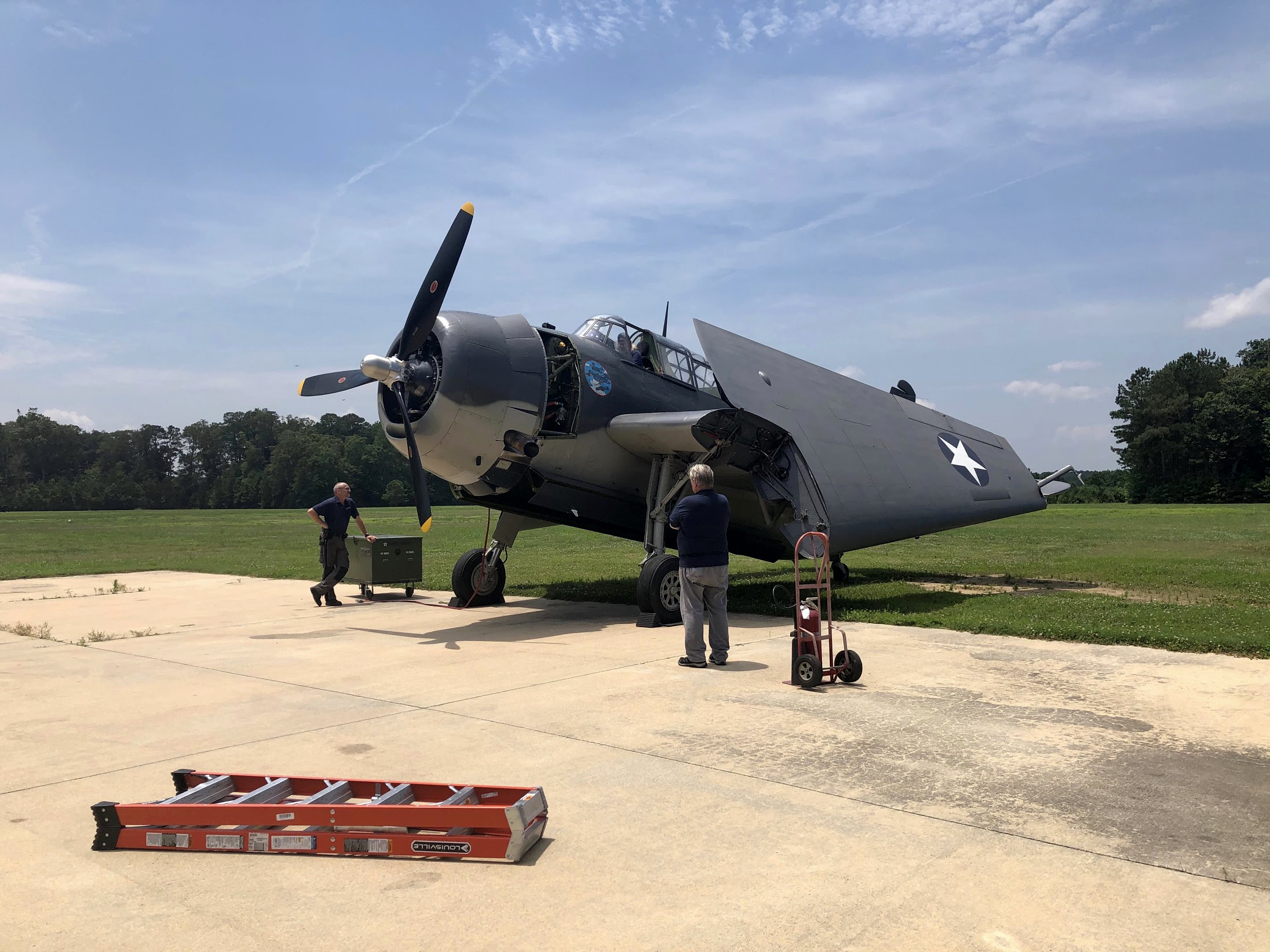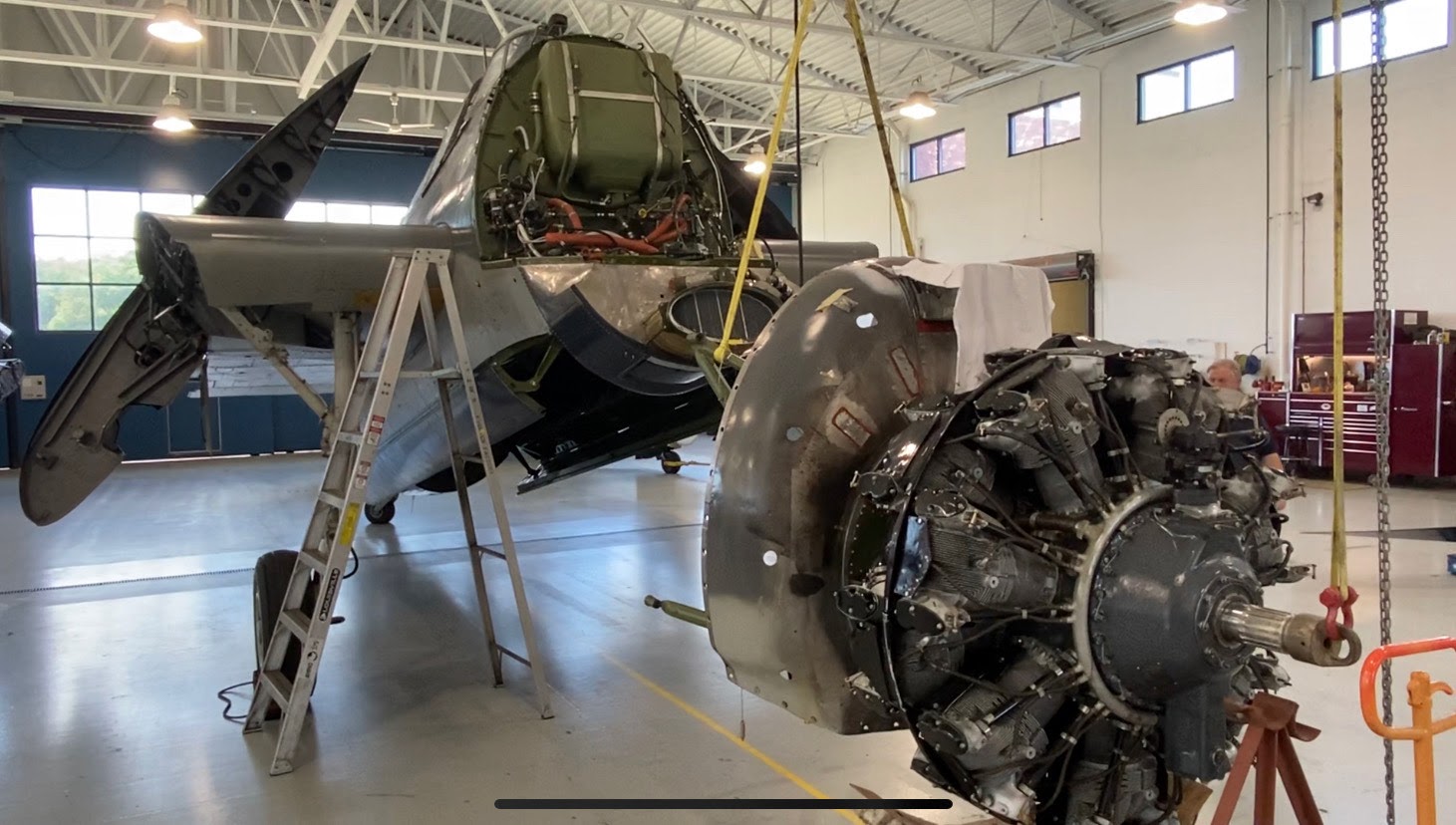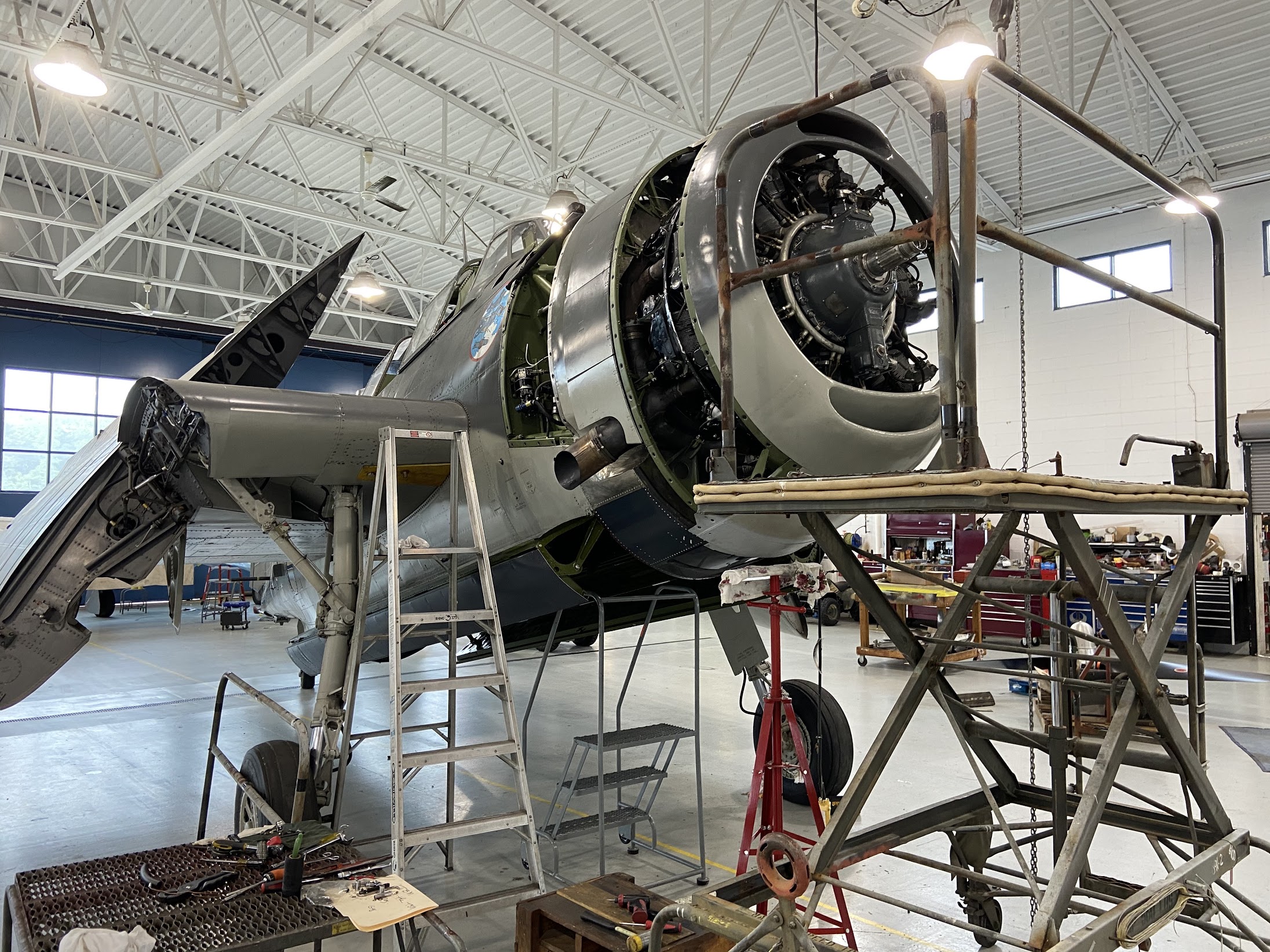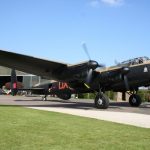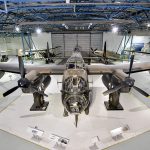The team at the Fighter Factory has has completed the restoration of Military Aviation Museum‘s Avenger. After an unfortunate mishap several years back, the aircraft required extensive overhaul. Waylaid by the need to create several complex custom parts, the restoration has progressed slowly but surely. Shortly before the conclusion of the restoration effort, Fighter Factory General Manager Tom Kurtz said, “As with
any long-term project, we are always filled with excitement as we near completion. We all hope that our efforts have contributed in some small way to keeping WWII history alive.”
With a freshly overhauled engine, propeller and reconstructed cowling fitted, the aircraft was subjected to an extensive series of test runs and test flights before being returned to the museum for display. Now able to be viewed from the Navy Hangar, the Avenger was flown for the public on October 24th and will be included in the museum’s flying schedule again next year.
Originally designed by Grumman, 7,546 of the 9,837 Avengers produced during World War II were actually manufactured by General Eastern Aircraft Division plant in Trenton, New Jersey. Delivered to the Navy on May 26, 1945, the aircraft did not see combat service during World War II, but features in the museum collection as a representation of the overall type.
Avengers, although originally developed as a carrier-based torpedo bomber to replace the obsolete TBD Devastator, would become widely used as conventional bombers, mine layers, scouts, anti-submarine patrol aircraft and even electronic countermeasures platforms across the fleet. From its first service in combat at the Battle of Midway, the Avenger would see service throughout the rest of the war with the US Navy and Marine Corps.
The Military Aviation Museum’s Avenger once again wears the markings of US Navy Ace Captain Richard “Zeke” Cormier of Composite Squadron 1 (VC-1) based on the USS Card (CVE-11). Cormier became an ace while flying the F6F Hellcat in the Pacific following his 75 Atlantic combat missions in the Avenger.







